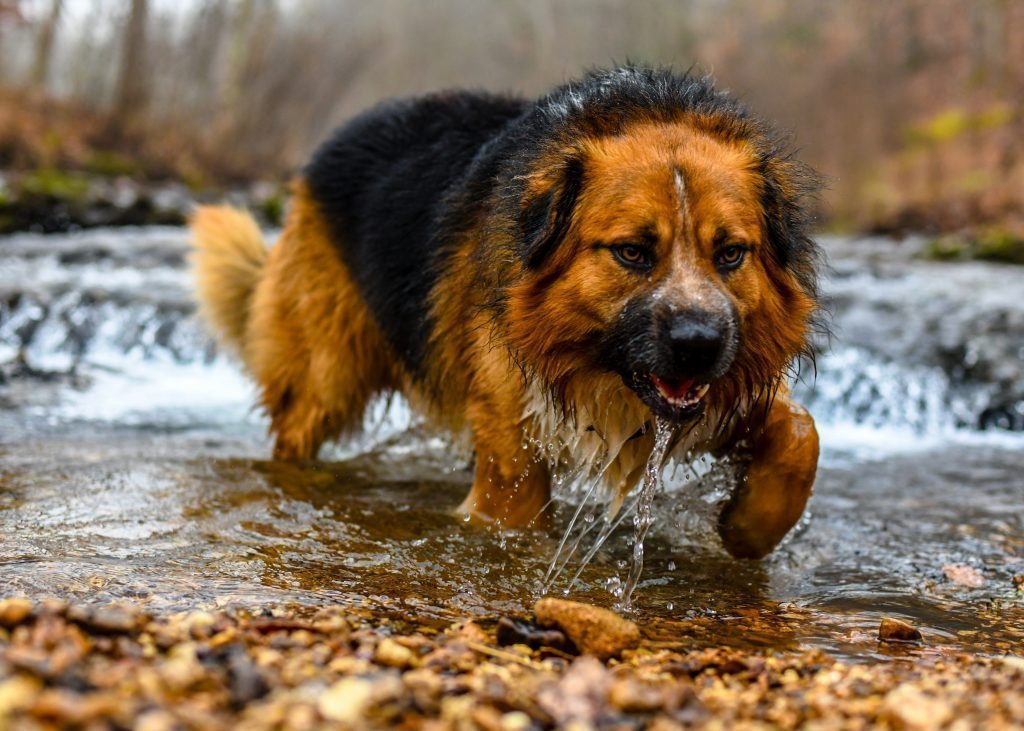When stone cold Hawkeye was a pup, he was hard to convince. We had problems with focus and distraction. Hawkeye forced me to raise my game and learn training techniques to overcome the issue. Since then, I’ve proofed these techniques on several dogs and found them to be effective at forming a well-focused, less distractable companion. In my breeding program, I use these same techniques on my English shepherd puppies starting at about week 5 or 6.
Exercise for eye contact
When a pup mands and makes initial eye contact with me, that’s when I first mark and reward. Then I hold eye contact with him and mark repeatedly at progressively longer intervals. We’ll get up to 10, 15, or even 30 seconds. So for example, I might mark and reward at 2 seconds, then 8 seconds, then 20 seconds, then 30 seconds. I’ll continue as long as he can. It becomes kind of a “stare down” contest. At each interval, I give, and he receives the reward without breaking eye contact.

Exercise for attention
We’ll take a walk to a part of the ranch where we are alone, but where we are still within earshot of other dogs. As he explores in a small area around me, I mark and reward each time he starts heading back to me. If explores out too far from me, I’ll do a puppy recall, then mark and reward as soon as he heads towards me. The big reward comes when a dog barks or some other sound happens off in the distance. As soon as his ears perk up, he cocks his head or takes a step towards the distraction, I’ll mark and reward. This usually brings him right back to a mand in front of me. If the distraction was too great for the mark and reward to pre-empt his attention, I’ll puppy recall, then mark and reward. On the rare occasion where a distraction is too great for both puppy recall or a mark, I make an admonishing noise and start walking towards him at a brisk pace. After I’m about half-way to the dog, I’ll bend over slightly at the waist and clap my hands while doing the puppy recall. While clapping and recalling, I begin to turn and walk directly away from the dog. Most dogs will follow.
There must be zero tolerance for the last scenario. The dog can never be allowed to willfully ignore me. This last case almost never happens, and should become ever less frequent as the training progresses. But if a dog is being stubborn, I will crate/kennel him and try again after we both take at least a twenty minute break.


